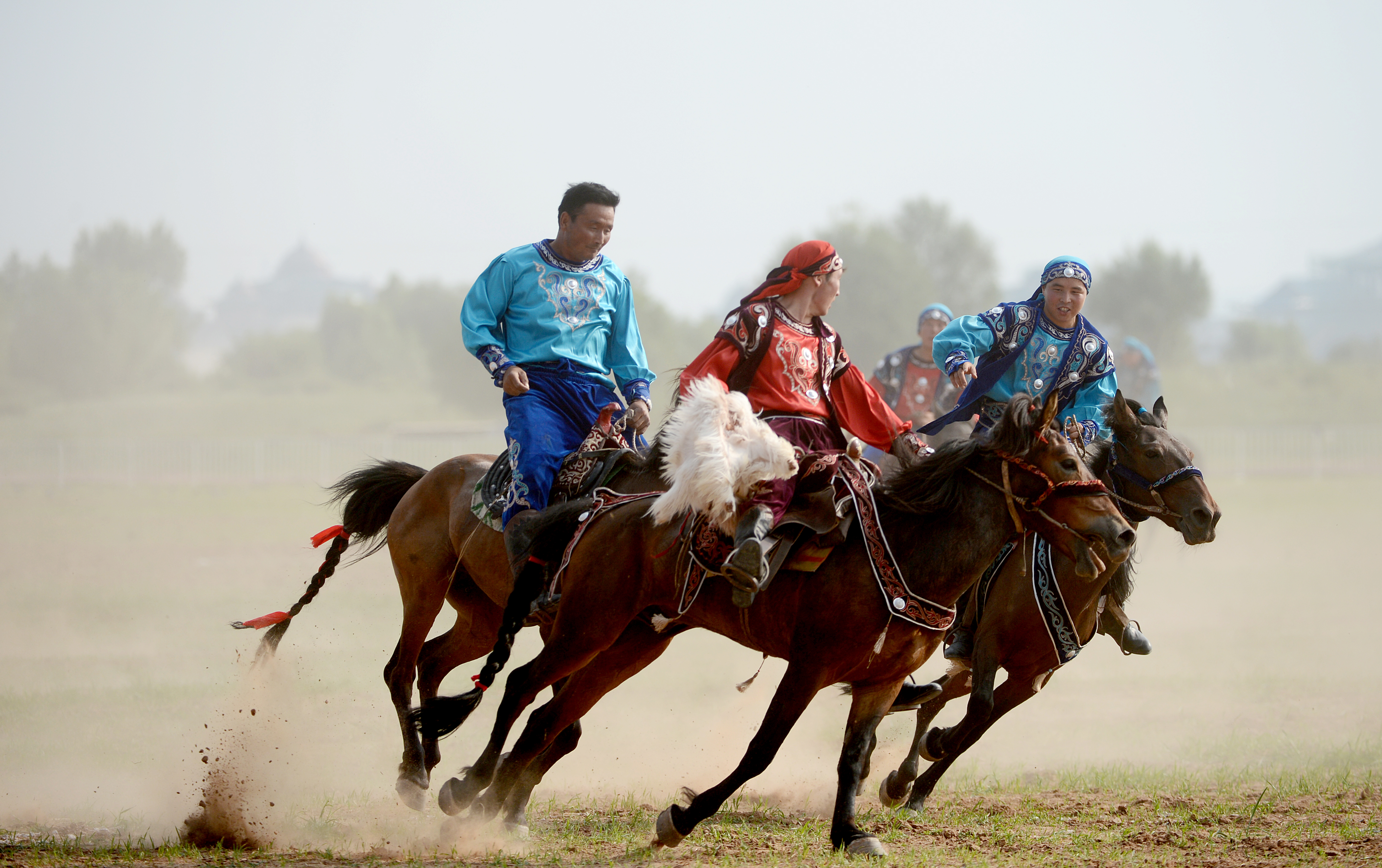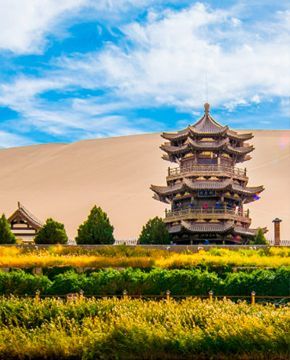As one of the important places in China, Xinjiang has a large state for a variety of ethnic minorities and cultures. What impressed the tourists most in Xinjiang is the diversity of customs.
What to know about Xinjiang Custom?
Dietary:
Expect its unique landscape, the custom in this area is different from other places in China. In terms of dietary, the ethnic minorities who believe in Islam in Xinjiang mainly eat pasta, rice, cattle and mutton. But they do not eat pork, donkey and carnivores to name just a few
Naan, polo, pulled noodles and milk tea are the staple food of Xinjiang ethnic minorities. Pilaf or Polo, literally translated as "hands grab rice", it is a special Xinjiang cuisine, cooked with mutton, carrots and onion. Kebab serves in festivals or guests. The Shish Kebab is a well-known snack that welcomed by home and aboard.

Greeting:
Ethnic minorities attach great importance to etiquette when it comes to behaving themselves. When they are going to meet relatives and friends, they will usually shake hands and greet each other. Among them, the Uygur, Kazakh and other ethnic groups meet their family members or friends, they are accustomed to putting their right hand in the centre of their forechest, then tilting their bodies forward by 30 degrees, and repeatedly saying, "Wishing you Well".
Festivals:
Like other ethnic peoples who believe Islamism, the traditional Eid-ul-Fitr in Arabic as well as the Corban Festival, also called the Sacrince Festival, are the most important festivals. During the Festivals, the Uygurs and other ethnic minorities will celebrate them with various activities and rituals, so it is during the festivals that one can see most of the Uygur folk customs.
Nuroze Festival is one of the traditional festivals of Xinjiang ethnic minorities, which celebrates the passing of the cold winter and the coming of warm spring. Nuroze means "the day of spring rain", the day of the festival is on the 20th-23rd of March every year. This is the time with equal length of nights and day time. So Nuroze Festival is a festival to welcome spring. When it is on the midnight of the festival days, people would beat a drum called "Nuroze drum" to tell the locals that the festival begins. People who hear the drum beating would come to the place in which the drum is beaten and sing and dance till the dawn. On the second day people, in their best, would organize various activities and rituals to welcome the coming of spring and a special food "Nuroze food" would be offered and songs and dances and games and walking in the filed are typical activities for the festival. The traditional Eid-ul-Fitr in Arabic as well as the Corban Festival, also called the Sacrifice Festival, are two of the most important festivals.
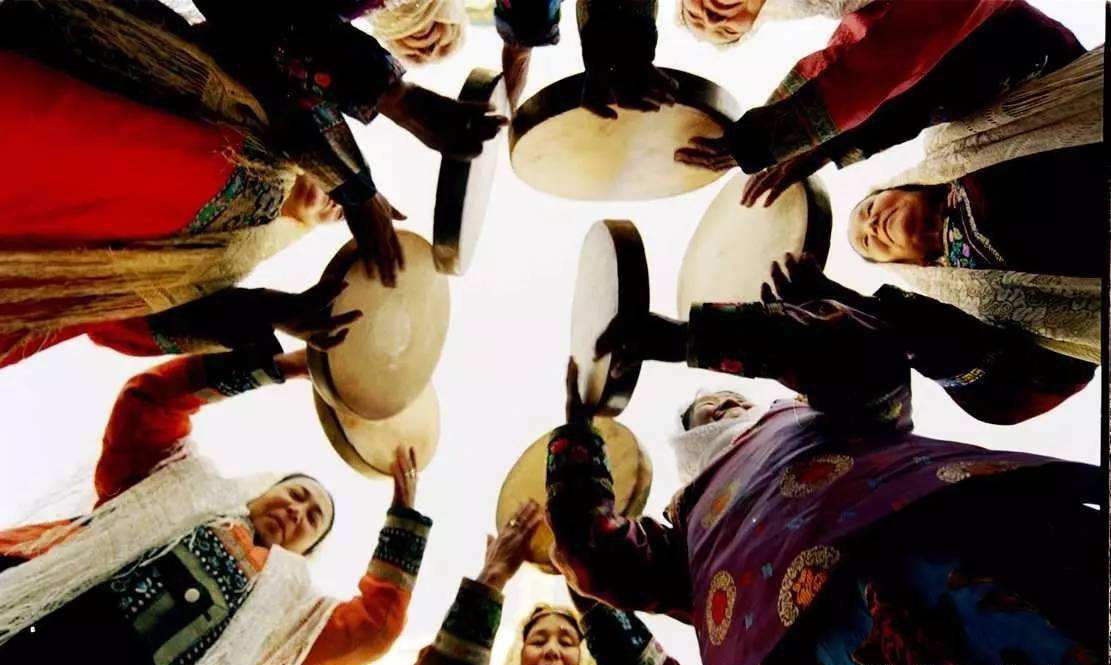
Costumes:
The traditional costumes of ethnic minorities in Xinjiang are colourful and varied. Uygur and Kazakh women like to wear colorful dresses and jackets with shoulders.
Uygur men usually wear a long gown, known as "qapan"', with a tilted front and waistband but no button. Women like wearing broad-sleeved piece dresses. Girls arranged their hair into many small braids. The Uygur people, both old and young, men and women, like to wear the four or five angled embroidered hat. The Uygur hats, known as "Dopa", are exquisite handicrafts with bright colours and various designs. The styles vary based on different districts, sexes of wearers, and professions. Besides, the Etles sat in for women's dress and Yengisar knives brought by men are handicraft.
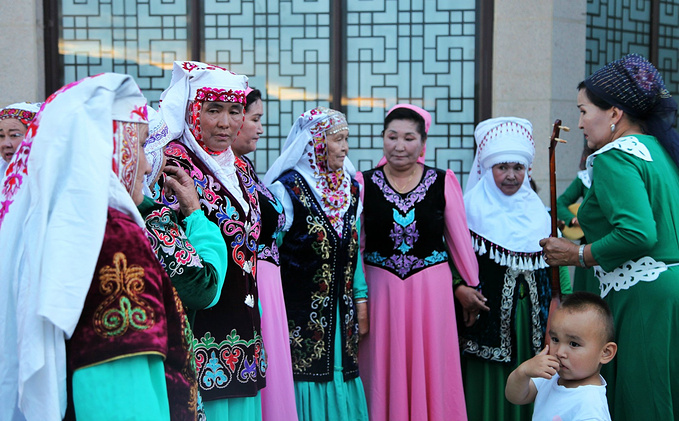
Xinjiang performance:
Uygur has long been known as "a nationality of song and dance". Sanem is the most popular folk dance among all the Uygurs. In a performance of Sanem, one or two dance together, and others sit in a circle, clapping, drumming, which creates great excitement. The classical folk music Twelve Muqam is a treasure in the stock of Chinese glorious arts, with 12 sets and 170 varieties of tunes and 72 songs while Meshrep" combines the performance of songs and dances for entertainment.
Kazakh's arts have a great variety, including crafts, music and dance. In terms of crafts, there are sculptures, embroidery and picture design. The two-stringed instrument, "Dongbula", is their favourite and the folk singers and storytellers, "Akens" are grown by generation after generation.
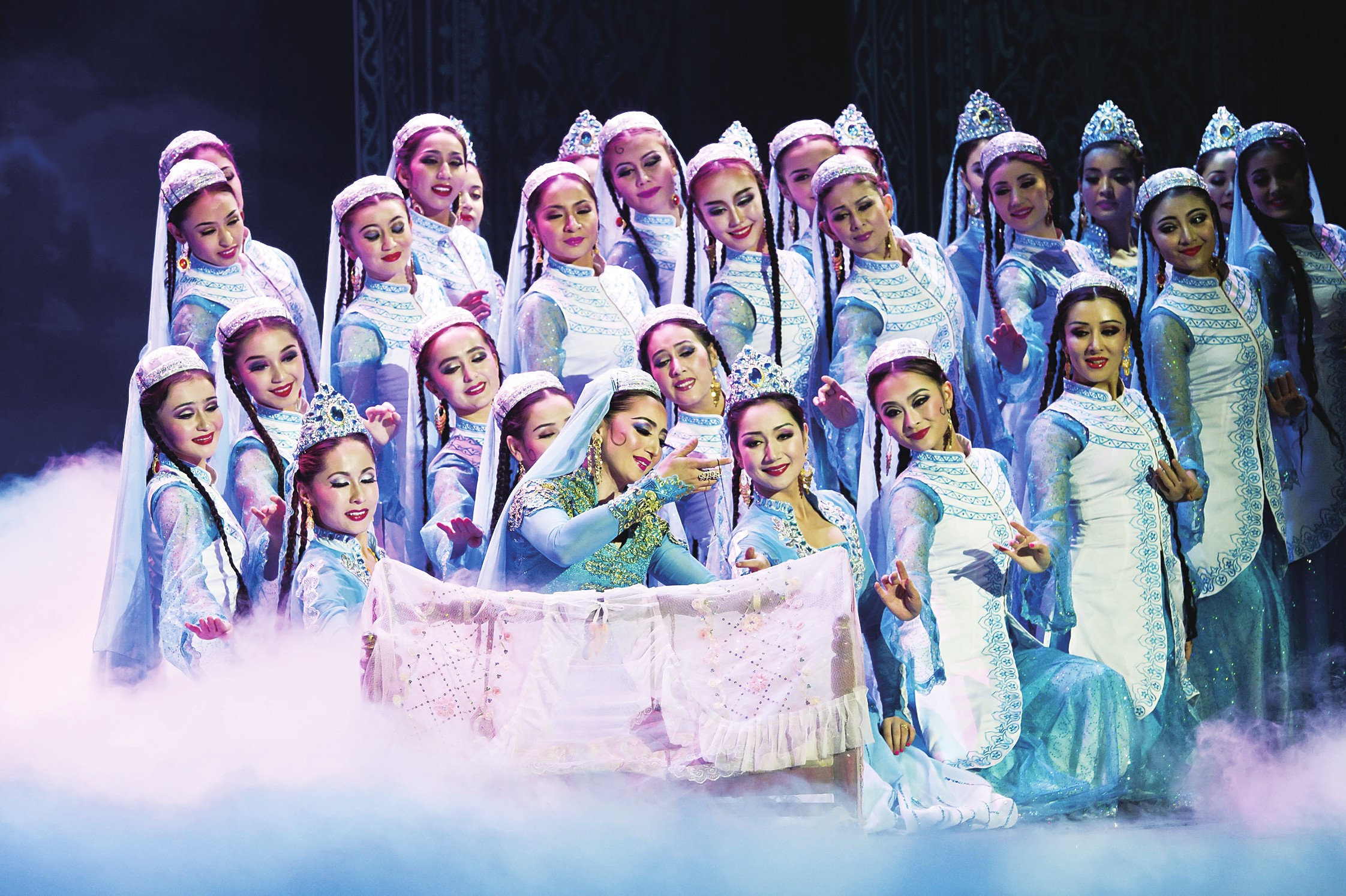
The wedding ceremony of Tajik:
Weddings are one of the significant things for us. Among them, in Tashkurgan, Xinjiang, the ceremony makes an important statement. The grand traditional Tajik marriage celebrations reflect the ethnic group's distinctive features, and represent a unique wedding culture in China.
The traditional Tajik wedding lasts for seven days. The first day can be considered the "prologue" to the wedding ceremony. That day, both the bride and groom stay in bed in their parents' homes. The bride covers her face with a veil during the first three days of the wedding until the imam or the chief witness at the ceremony opens her veil in public.
Meanwhile, a wedding is an important holiday for the whole village. Guests sing and dance to celebrate the happy occasion, and the families feed the guests stewed mutton, beef and other delicious foods.
Traditionally, both bride and groom need to stay at home at least 3 days before the wedding. Witnessing the course of their children's marriage is a sacred duty for parents in Tashkurgan Tajik Autonomous County in northwest China's Xinjiang Uygur Autonomous Region. And most Tajik couples here remain devoted to each other until the end of their lives.
On the wedding day, people are bustling around, decked out in traditional clothes in bright colours. White represents growing old together, while red symbolizes a happy life.
The bride wears a red-and-white handkerchief - which signifies happiness and good luck - around her wrist. The groom wears a hat decorated with cloth in the same colours.
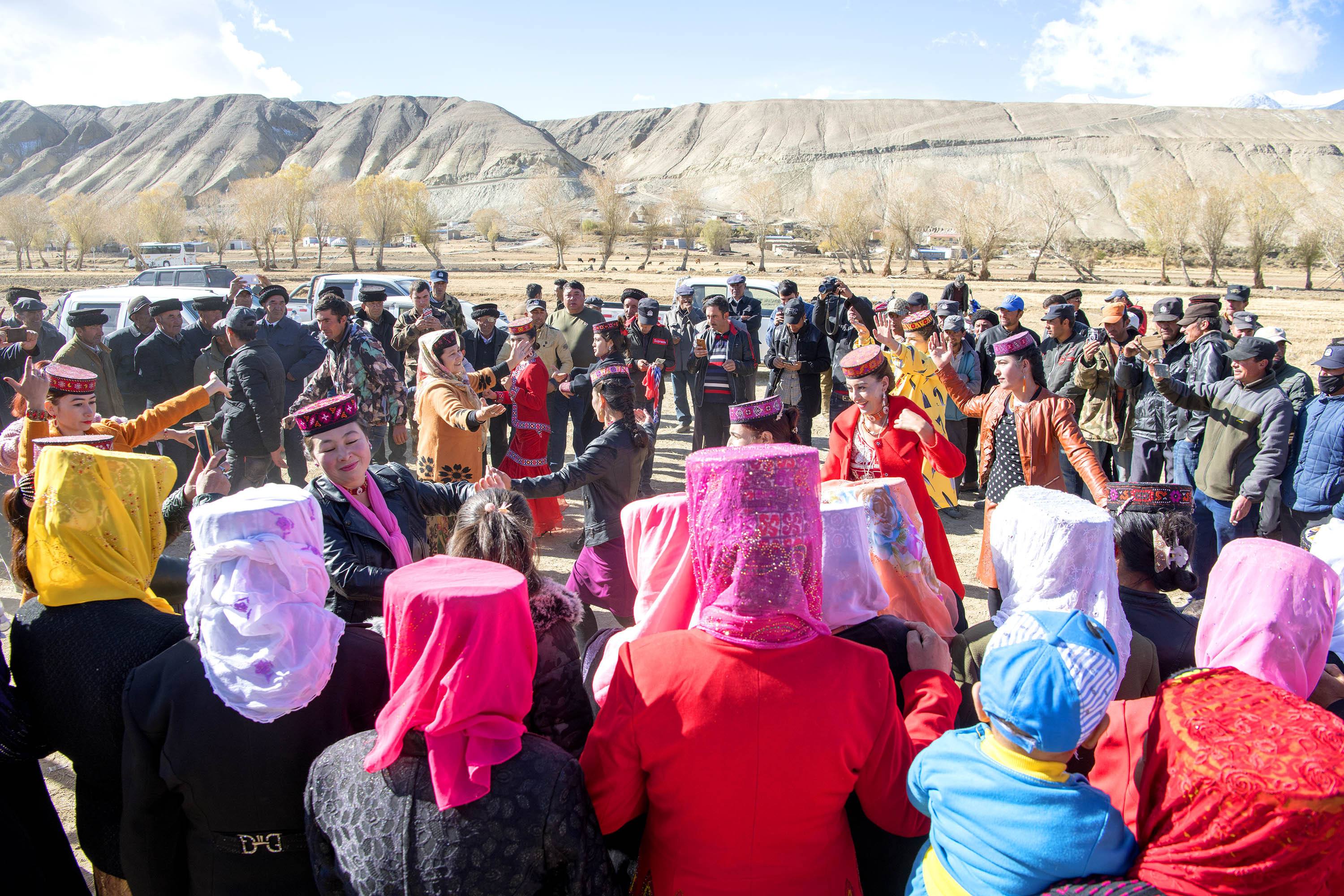
Customs of Kazakh and Mongolian:
Kazakh is proud of horse riding. Grazing, transportation, expedition, and even their life depends heavily on horses. Therefore, they are named "A nationality on the horseback". In spring, summer, and autumn, they live in collapsible round yurts and winter in flat rooted earthy or wood houses in pastures. In the yurts, living and storage spaces are separated. The yurt door usually opens to the east. They ride for business and some take sleighs in winter.
Mongolians have been known as "a people of music and poetry". Horsehead fiddle is a musical instrument favoured by Mongolians. Additionally, they also have two strings fiddle "Tuoburshu" in Xinjiang. "Nadam", means games in Mongolian, which is the name of a traditional Mongolian fair.
